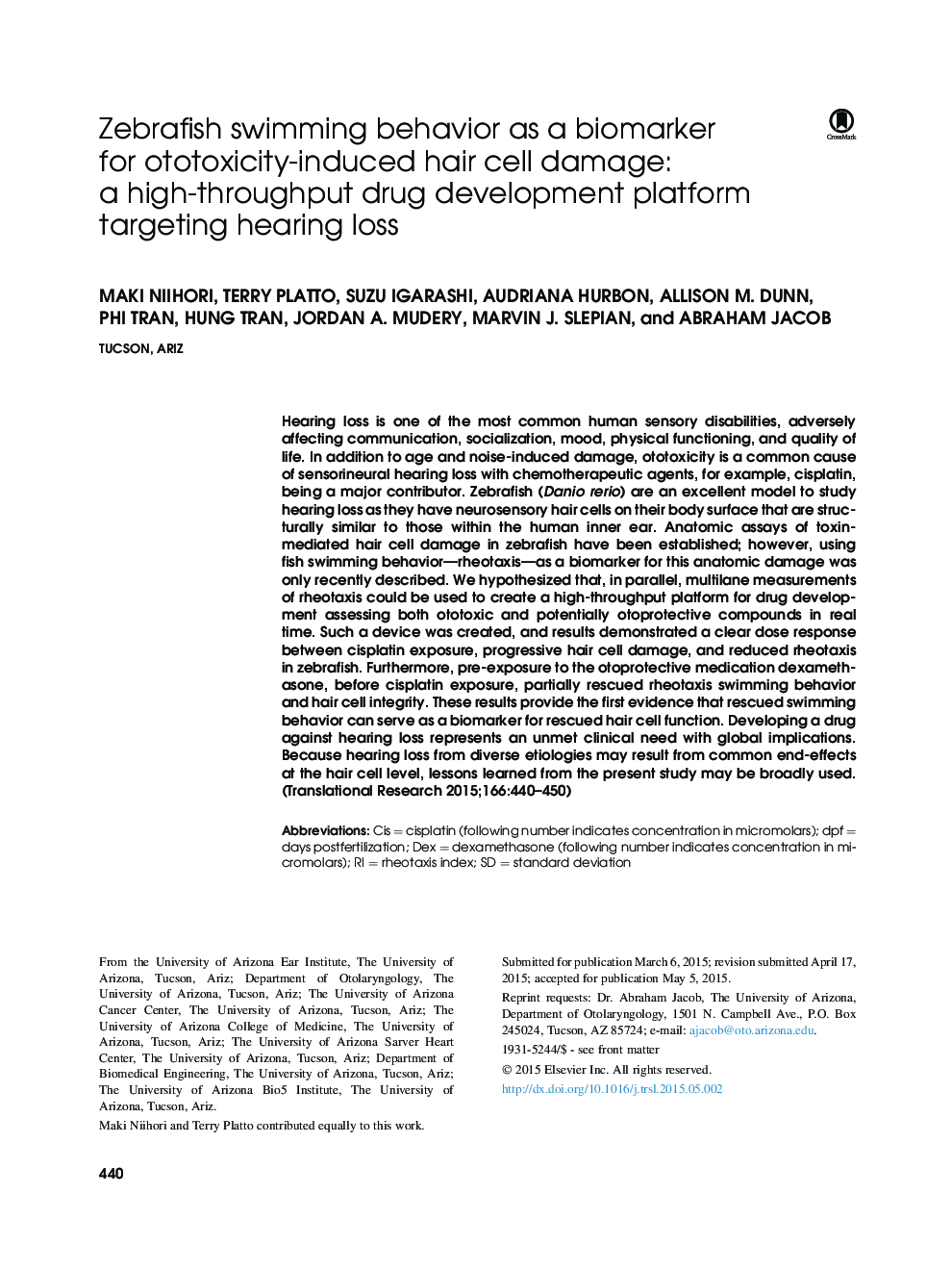| کد مقاله | کد نشریه | سال انتشار | مقاله انگلیسی | نسخه تمام متن |
|---|---|---|---|---|
| 3840306 | 1247903 | 2015 | 11 صفحه PDF | دانلود رایگان |
Hearing loss is one of the most common human sensory disabilities, adversely affecting communication, socialization, mood, physical functioning, and quality of life. In addition to age and noise-induced damage, ototoxicity is a common cause of sensorineural hearing loss with chemotherapeutic agents, for example, cisplatin, being a major contributor. Zebrafish (Danio rerio) are an excellent model to study hearing loss as they have neurosensory hair cells on their body surface that are structurally similar to those within the human inner ear. Anatomic assays of toxin-mediated hair cell damage in zebrafish have been established; however, using fish swimming behavior—rheotaxis—as a biomarker for this anatomic damage was only recently described. We hypothesized that, in parallel, multilane measurements of rheotaxis could be used to create a high-throughput platform for drug development assessing both ototoxic and potentially otoprotective compounds in real time. Such a device was created, and results demonstrated a clear dose response between cisplatin exposure, progressive hair cell damage, and reduced rheotaxis in zebrafish. Furthermore, pre-exposure to the otoprotective medication dexamethasone, before cisplatin exposure, partially rescued rheotaxis swimming behavior and hair cell integrity. These results provide the first evidence that rescued swimming behavior can serve as a biomarker for rescued hair cell function. Developing a drug against hearing loss represents an unmet clinical need with global implications. Because hearing loss from diverse etiologies may result from common end-effects at the hair cell level, lessons learned from the present study may be broadly used.
Journal: Translational Research - Volume 166, Issue 5, November 2015, Pages 440–450
